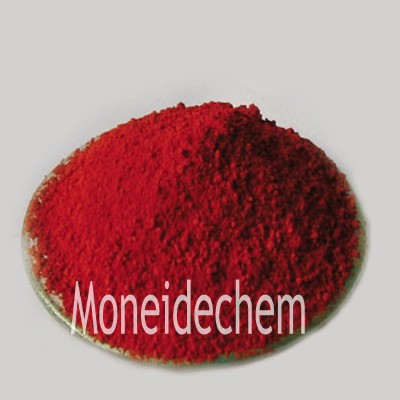Welcome to Tangshan Moneide Trading Co., Ltd.
Moneide Chemicals
Tel: 86-315-8309571
WhatsApp/WeChat/Mobile: 0086-15633399667
Skype: janet-honest
Mail: sales@moneidechem.com
Address: 2-7-523 Jidong Building Materials Tangshan, Hebei 064000 China
|
Chemical Name |
Fluorescein |
|
CAS No. |
2321-07-5 |
|
Molecular formula |
C20H12O5 |
|
EINECS No. |
219-031-8 |
|
Molecular weight |
332.31 |
|
Molecular Structure |
|
|
Details |
Appearance: Orange or red powder Maximal absorption wavelength: λ(PH8.0)490~493nm Quality absorption coefficient L/(cm·g): λ(PH8.0) 200min Solubility in alcohol: Passes test Sensitivity test: Passes test Sulfated ash: 0.3% max Loss on drying: 5.0% max Solubility: solve in hot alcohol,acetic acid and lye,not solve in water Packing: 25kg/ fibre drum |
|
Main Application |
Used as fluorescence indicator and REDOX indicator. |
What is fluorescein used for?
Fluorescein serves as a versatile fluorescent tracer in medical diagnostics and industrial applications. In ophthalmology, it's widely used for retinal angiography to evaluate blood circulation and detect eye abnormalities like diabetic retinopathy. The dye helps identify corneal abrasions and ulcers when applied as eye drops. Industrial applications include leak detection in plumbing systems and as a marker in hydrological studies to track water flow. Its bright green fluorescence under blue light makes it valuable for forensic investigations and as a pH indicator in laboratory research. The compound's ability to glow intensely under specific lighting conditions enables non-invasive diagnostic procedures.
Is fluorescein dye safe to use?
Fluorescein is generally safe when used properly under medical supervision, though some precautions apply. The dye has excellent safety profile for ophthalmic applications at standard concentrations, with most side effects being mild and temporary. Allergic reactions occur rarely but can include skin rashes or more severe responses in sensitive individuals. Intravenous administration requires careful monitoring as higher doses may cause nausea or vasovagal reactions. Regulatory agencies approve its use in diagnostic procedures, considering its benefits outweigh minimal risks. Proper screening for patient allergies and using sterile preparations minimize potential complications during medical applications.
What effect does fluorescein have on the eyes?
Fluorescein temporarily stains damaged eye tissue, highlighting corneal defects with bright green fluorescence under cobalt blue light. When injected intravenously for angiography, it circulates through retinal blood vessels, revealing circulation abnormalities. The dye causes harmless temporary yellow discoloration of vision and skin that fades within hours. Some patients experience mild stinging upon eye drop application, but this quickly subsides. Fluorescein doesn't interfere with vision clarity during examinations and gets naturally cleared from the eye through tears. Its unique interaction with ocular structures provides crucial diagnostic information without lasting effects on eye function or health.


























